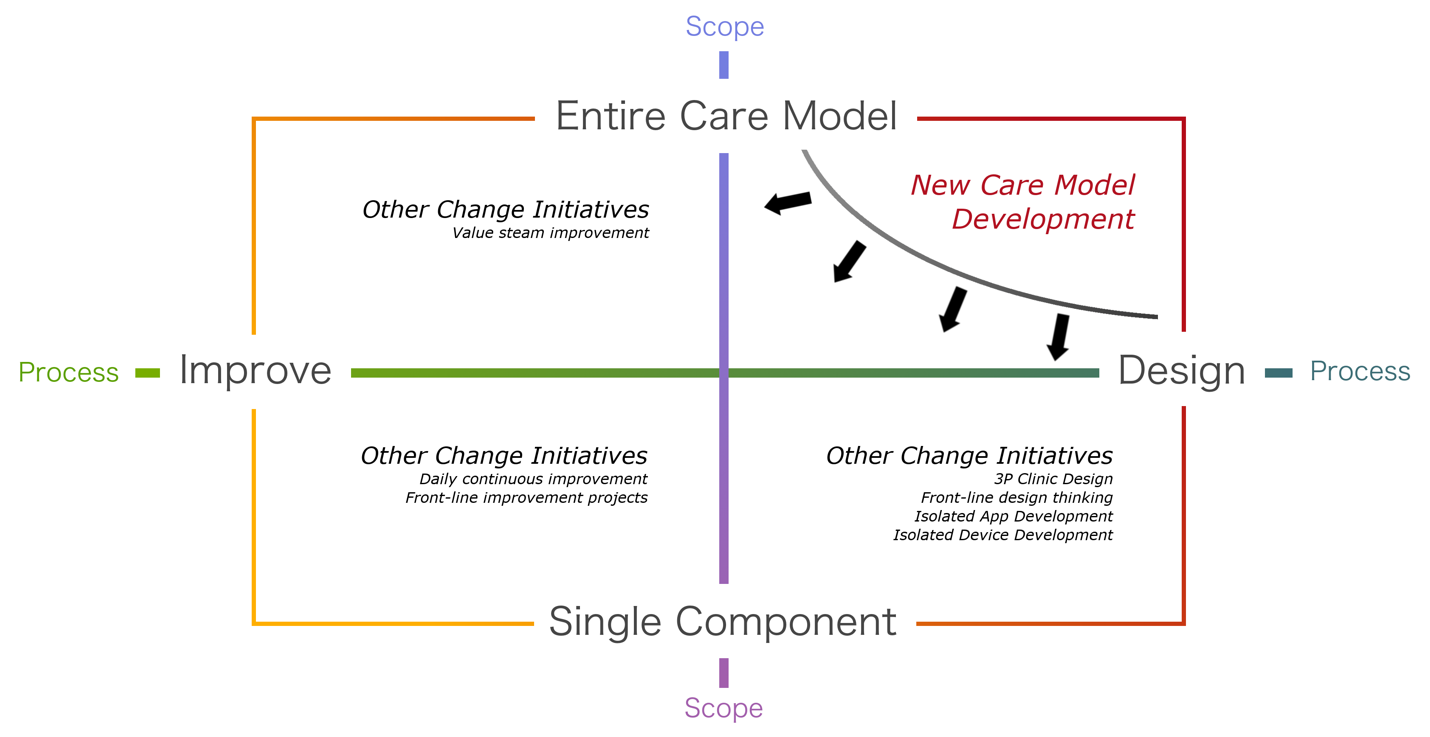Defining New Care Model Development
It seems that everywhere you look in healthcare today you find someone talking about innovation. In my previous blog post, I talked about the need to focus innovation efforts on care models in order to truly impact the delivery system and provide meaningful outcomes for patients. In an effort to avoid getting lost in the sea of new apps, artificial intelligence, or other technology, we have stopped using the word innovation to describe this work on care models. Is it innovative? Sure, but lumping it into such a broad category creates confusion and misalignment. Instead we are calling it what it is: New Care Model Development. In this post we will introduce the concept.
Development vs. Delivery
Organizations in most industries leverage four primary functions to remain competitive. First, products, services, and systems, that deliver value to customers must be dreamed up, designed, engineered, and built (the Development function). Second, the organization must market and sell those products, services, and systems (the Demand Generation function). Third, the organization must reliably deliver the products, services, and systems to customers in order to create value (the Delivery function). Finally, there are multiple internal processes such as accounting, human resource management, information technology, strategy development, and others that are necessary to remain effective (the Support function). These four functions are organized around the particular product or service that creates value, and how they interact and share knowledge with each other determines the overall effectiveness of the organization. In health systems, these functions are organized around care models. Most health systems have developed robust delivery, demand generation, and support functions. However, few health systems have a robust development function centered around care models.
Design vs. Improvement
There are two primary high-level processes used to drive change in care models, improvement and design. Improvement focuses on identifying non-value-added processes and components in the existing care model and then working with teams to find ways to eliminate that waste. Design focuses on developing a deeper understanding of the needs of the end user and then creating something new to meet previously unmet needs. Improvement and design processes can be targeted at many different areas and applied in varying scopes and combinations within health systems. When targeting care models, these efforts can range from focusing on one component of a care model to all six components (as defined in my previous blog post).
Current State
In many health systems today, there are processes and systems in place for both improvement and design. Management systems for daily improvement help catalyze front-line ideas directly focused on the care model in their respective areas. Event-based improvement, where multi-disciplinary teams are assembled to map processes and work across organizational boundaries, is a key capability. Design efforts focused on one or two components of the care model are beginning to make their way into health care with digital innovation hubs, and design thinking programs to engage the front-line. However, design teams focused on addressing entire care models are still rare. This capability – using a design process targeted at all components of a care model – is the foundation of New Care Model Development. Traditionally, healthcare delivery systems focus their efforts almost entirely on the delivery function—directly delivering value to patients by utilizing established care models. Because of this, all change efforts (improvement and design) are usually targeted at changing existing care models, rather than creating new ones from the ground up with a dedicated team in the development function.
With a changing reimbursement landscape, hospitals and clinics that continue to deliver care the way it has always been delivered are at risk. Development of new care models and services is needed more than ever, but many healthcare systems fall short without a reliable system (team, process, space, funding, & governance) for this task. This is the work of the New Care Model Development track of the Catalysis transformation roadmap. Developing this new function within health systems, in parallel with all of the other work of the organizational transformation, will help health systems prepare for the uncertain future that lies ahead.
Ted Toussaint, Faculty
Catalysis
Related Items
Innovation in Healthcare workshop










Leave a Reply